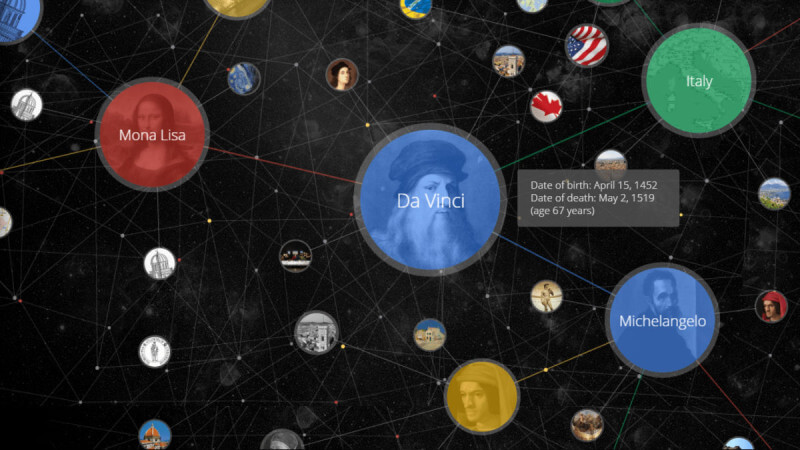Introduction to Artificial Intelligence
Raghava Mutharaju
Knowledgeable Computing and Reasoning Lab
IIIT-Delhi

About Myself
Work Experience and Education
- Assistant Professor (CSE), IIIT-D
- Research Scientist, GE Research Center, New York
- Internships at IBM Research, Bell Labs, Xerox Research, Stardog
- Software Engineer, CA Technologies, Hyderabad
- Ph.D from Wright State University, Dayton, OH, USA
- M.Tech from MNNIT, Allahabad
- B.Tech from JNTU, Hyderabad
Applications
- Google search
- Knowledge card on the right side
- Personalized advertisements
- Games
- Navigation of characters from one location to the other (avoiding obstacles, other characters)
- Adapting the behaviour of certain characters with the way user is playing the game
- Computer/Machine playing games such as Chess, Go, Poker, Jeopardy etc.
- Intelligent Virtual Assistants
- Google Assistant, Amazon Alexa, Siri, Cortana etc.
- Healthcare
- Analyzing medical images (radiology), wearable device data etc.
Natural Intelligence
- What is natural intelligence?
- We receive inputs through the sensory organs
- We take decisions based on these inputs
- How are we able to take decisions?
- our knowledge (reading books)
- learning from others (living/non-living things around us)
- Kids learn from parents, friends, teachers etc.
- analogy
- Birds fly. Ostrich is a bird.
- gut feeling
Artificial Intelligence (AI)
- It is the study of the general principles of building intelligent agents.
- An agent is any device that can perceive its environment through sensors and react to it by taking action to achieve a stated goal.
- Mimicking human senses, i.e., sight, sound, touch, smell, taste, is a form of perception.
- Intelligent agents should be able to interpret and process other forms of input such as text, semi-structured, and structured data.
- Output of an intelligent agent could be in multiple forms such as movement (reaching a destination), decision taken, sound etc.
How do we reach The Indian School from IIIT-D?
- Multiple paths
- Which path is the best?
- Depends on multiple factors
- Distance, time, road conditions, time of the day
- Given an initial path and a final path, search algorithms find the best possible route
How can a machine engage with the world?
- Perception: Gather information about the environment and react to it
- Information is gathered with the help of sensors
- Temperature, pressure, movement, air quality, images etc.
- Machines analyze the sensor data and take actions (sometimes using actuators)
Perception
- Detecting the movement of a person using images from multiple different cameras (with different angles)
- Counting the number of tigers in India
- Lip reading: Transcribe the text for a video
- Automatic Speech Recognition
- Generating captions for images
How can a machine observe the world and improve?
- Learning: Machines can observe the world including its own experiences and improve its performance over time
- Types of learning based on the feedback
- Supervised learning
- Unsupervised learning
- Semi-supervised learning
- Reinforcement learning
Supervised Learning
- Agents learn from examples (labelled data)
- This is a cat
- This is a tiger
- Person holding an umbrella
- Dog is a mammal
- Is this a cat?
- I am 90% sure that this is a lion
Unsupervised Learning
- Learn patterns without any explicit feedback
- Clustering
- Taxi driver can learn traffic time and non-traffic time, without explicit feedback
Semi-supervised Learning
- Limited amount of labelled examples are given
- Labels might not be accurate
- Need to find patterns from unlabelled data
- Guess a person's age from their picture
- We can collect some limited labelled data
- People might lie about their age
Reinforcement Learning
- Agent learns from a series of reinforements - reward or punishment
- Eg: Tip to a barber
- A reward function exists. An action is taken if it leads to a reward
- Exploration vs Exploitation trade-off
- Picking the best possible ripe mango in 15 mins from a tall tree with many branches
Natural Language Processing
- Extracting knowledge expressed in the natural language (books, blogs, articles, tweets)
- Communicate with humans using natural language
- Agents should be able to parse sentences and make sense out of it
- Applications: Speech recognition (speech to text), machine translation (text to speech), information retrieval
Knowledge Representation and Reasoning (KRR)
- Techniques to capture knowledge about the world in a form that machines can understand
- A Car is a type of Vehicle
- Car has exactly four wheels
- Car has at least two doors and at most four doors
- Reasoning is the process of deriving new facts (knowledge) based on existing facts
- All birds fly
- Pigeon is a bird
- Can Pigeon fly?
- KRR is the field of AI that helps an agent to use what it knows (background knowledge) to decide what to do
Applications of KRR
- Unstructured data to structured data
- Search Engine Optimization: Schema.org
- Adding semantics to the data
- Data Integration
- Recommendations
- Drug recommendation based on symptoms
- Question Answering
- Who is the president of India who was also a scientist?
Structured Data
- <Delhi> <capitalOf> <India>
- RDF triple is called a RDF Statement
- Triple can be represented as a directed labelled graph
Knowledge Graph

Robotics
- Robots are physical agents that perform tasks in the physical world
- Robots are generally equipped with sensors, arms, wheels/legs, joints
- Social robots
- Robots interact with kids with autism spectrum disorder (ASD)
- Robots in industrial settings (assembly, welding, packaging and labelling)
Philosophical and Ethical Issues
- Autonomous vehicles
- Will we lose jobs?
- Will robots take over the world?